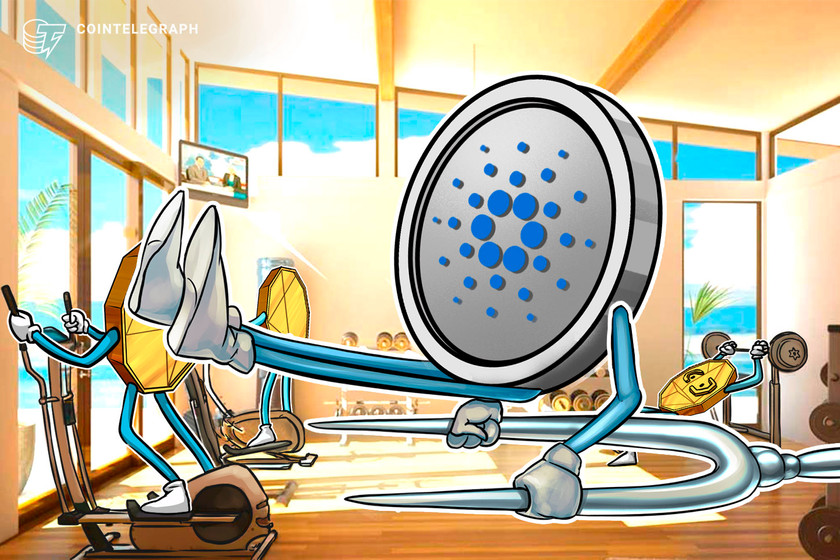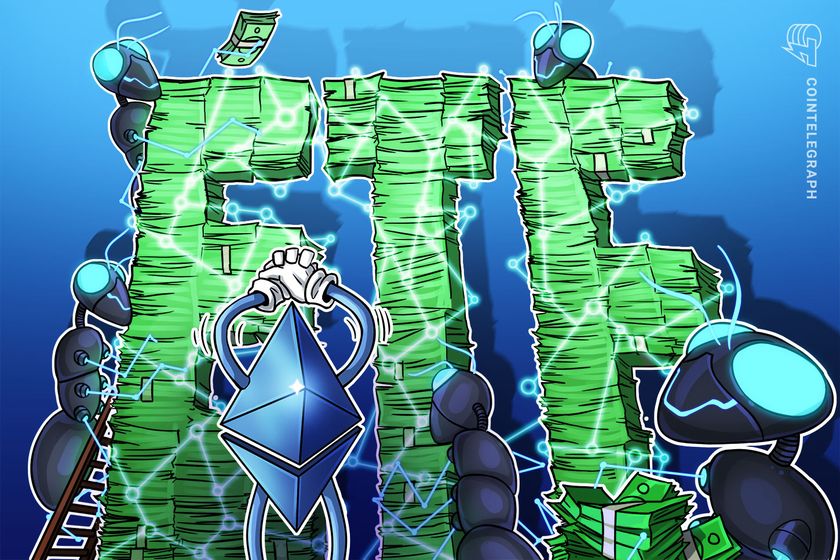What Cardano’s Vasil hard fork means for the blockchain

Cardano’s Vasil hard fork seeks to enhance the platform’s transaction throughput speeds, DApp development capacity, security and general usability.
After several delays and some setbacks, Cardano’s long-awaited Vasil upgrade finally went live on Sept. 22. From the outside looking in, the hard fork is designed to help improve the ecosystem’s scalability and general transaction throughput capacity as well as advance Cardano’s decentralized applications (DApps) development capacity.
To commemorate the event, an announcement was made by blockchain firm Input Output Hong Kong (IOHK) — which currently oversees the design, building and maintenance of the Cardano platform — just minutes after the development.
To obtain a more holistic overview of what the upgrade represents and its potential impact on Cardano (as well as the crypto ecosystem at large), Cointelegraph reached out to Shahaf Bar-Geffen, CEO of COTI, a protocol for creating decentralized payment networks and stablecoins. In his view:
“The Vasil Upgrade heralds the dawn of a new era for the Cardano ecosystem and the decentralized finance space at large. The upgrade aims to improve the network’s scalability and enhance Cardano’s smart contract capabilities.”
Bar-Geffen further noted that the hard fork will significantly improve the efficiency of Djed, an algorithmic stablecoin developed jointly by IOHK and the COTI Group, increasing the number of transactions carried out on the Djed platform and thus helping position Cardano as a prime contender for stablecoin transactions.
A closer look at what Vasil has to offer
Before looking at the functional and operational benefits afforded by the Vasil hard fork, it would be best to understand what exactly a hard fork is. In its most basic sense, a hard fork is a network upgrade set in motion when those governing a blockchain platform decide to add or fix certain features to the ecosystem.
In other words, when a hard fork takes place, the network splits into two versions that run separately, where one version follows existing features and rules while the other continues as an upgraded version of the network.
Expounding her view on the technical aspects of the upgrade, Charmyn Ho, head of crypto insights for cryptocurrency exchange Bybit, told Cointelegraph that at the application layer, Cardano’s Vasil hard fork aims to bolster the network’s current smart contracts to curate a better experience for both users and developers alike, adding:
“This will simultaneously lead to a more efficient building process with regard to applications on the chain. At the infrastructure level, the many upgrades that come with the Vasil hard fork will allow Cardano to increase its block size and TPS whilst maintaining its POS mechanism.”
Ho further highlighted that the Vasil hard fork is aimed not just at improving the scalability of the chain and optimizing its existing features but also at bolstering the network’s stability and connectivity. “This is a huge and prominent step forward for Cardano as the upgrade is expected to reduce the network’s transaction costs while increasing transaction speeds,” she added.
Recent: Ethereum post-Merge hard forks are here — Now what?
Lastly, it is worth noting that Vasil is not Cardano’s first major network upgrade because a year or so ago, the project witnessed the launch of another hard fork called Alonzo, which was designed to allow users to devise DApps using smart contracts. The Alonzo upgrade, alongside many other developments, was Cardano’s way of providing users with an attractive alternative to Ethereum, another platform that allows for the seamless development of novel applications using smart contracts.
Why is Vasil so important?
Named after a prominent member of the Cardano community who passed away in 2021, Vasil St. Dabov, the upgrade will enhance the ecosystem’s transaction throughput, efficiency and block latency speeds. Furthermore, the hard fork will see the implementation of a technique called diffusion pipelining, which seeks to improve block propagation times while increasing the network’s transaction processing capabilities.
The Vasil hard fork will introduce three key Cardano Improvement Proposals (CIPs), namely CIP-31, CIP-32 and CIP-33. In this regard, CIP-31 will spur the introduction of a new reference input mechanism that will allow DApps to access transactional output data without having to recreate it as before, making the entire process extremely streamlined and time-saving. At the same time, CIP-32 is designed to enhance Cardano’s native decentralization levels by introducing an on-chain data storage feature for network participants.
CIP-33 will make transactions lighter by making changes to the system’s native programming script, allowing for faster processing as well as reduced fees. Lastly, another improvement called CIP-40 will be introduced as part of Vasil. It will introduce a new output transaction mechanism to help improve block transmission without full validation.
Other updates include an enhancement of Cardano’s native smart contract programming language Plutus, which will now be more functionally advanced than its previous iteration. Not only that, Vasil will also improve the platform’s security by making it easier to interface with Cardano’s UTXO model (which has been built to resemble that of Bitcoin) while keeping its transaction load off-chain.
Potential effects on ADA
While the first round of the hard fork started on Sept. 22, the remaining upgrades are set to take effect on Sept 27. To this point, the second phase of the hard fork will look to redefine Plutus’ cost model, which has a direct effect on the processing power and memory fees required to govern Cardano’s native smart contracts.
In addition to the Vasil upgrade, the Cardano team revealed that it has been working tirelessly on the development of its layer-2 scaling solution — the Hydra head protocol — which is capable of processing transactions from the Cardano blockchain while still making use of it as its core security and settlement layer.
To this point, a recent update by the Cardano team revealed it had successfully addressed a known issue with Hydra’s node framework. As things stand, the protocol does not have a fixed release date. However, the IOHK team has hinted that the offering could make its way into the market sometime in late 2022 or the first quarter of 2023.
Recent: El Salvador’s Bitcoin decision: Tracking adoption a year later
Vasil was originally slated to go live earlier this year but faced numerous setbacks. Even though the upgrade is live now, the ecosystem continues to reel in from the impact of these delays. For example, since the start of 2020, Cardano’s native cryptocurrency, ADA, has continued to witness a dip in its transaction volume. Not only that, but from a purely price-performance standpoint, the upgrade has not been able to do much in terms of spurring ADA’s value, with the currency trading down less than 1% on the week.
Despite ADA’s price action continuing to remain quite lackluster, the fact that the Cardano ecosystem has made such tremendous strides over the past year shows that the project seems to be primed for big things in the near to mid-term.









